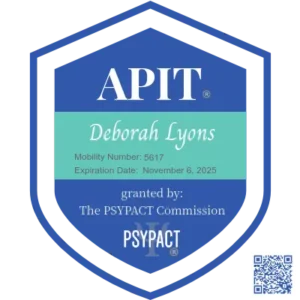 Lately I’ve found myself at one of those nodal points in life where we examine past decisions with a willingness to take risks and address the problem in a new and different way. One such arena for me was the manner in which I market myself as a psychologist, and my private practice as a business.
Lately I’ve found myself at one of those nodal points in life where we examine past decisions with a willingness to take risks and address the problem in a new and different way. One such arena for me was the manner in which I market myself as a psychologist, and my private practice as a business.
“Market” is an interesting word in that it can be used as either a noun or a verb. As a noun it can mean a place where buyers and sellers convene for the sale of goods (i.e., Central Market food chain; not to be confused with its Saturday night cousin known as a “meat market”). It can also be used to refer to the trade or traffic of a particular commodity (i.e., the stock market; again not to be confused with its second cousin the “meat market”). As a verb the word most commonly means to buy or sell something. Generally speaking when a market or marketing works, we are pleased. When it fails, it’s time to reassess.
With regard to the available marketplace for services needed by families facing divorce or to the marketing of those services to these individuals I ask you to consider your answer to the following question: “Are you pleased with what’s happening or is it time to reassess?” If you have ever witnessed a divorce or stepped into the aftermath of one, it’s hard to find indicators of market satisfaction. In fact, the level of market dissatisfaction is alarming as represented in the high rate of divorced couples that continue to litigate against each other, the number of disgruntled clients who complain or bring suit against an attorney, and the growing number of disenfranchised consumers who are choosing to represent themselves pro se.
Much has been written about the kind of reform that’s needed within the family court system to make the process of divorce more compassionate and the outcomes more positive. I propose that the professionals who work with divorcing families also take a step back and re-examine the market of services that we provide and the ways in which they are marketed. It’s time to take some risks and address in a different and innovative way the matter of how families divorce.
The Divorce Marketplace (noun)
- Limited in scope – People who find themselves in the midst of one of the biggest stressors of their lives don’t know what they will need or how to find it. Once an attorney has been hired there is a false assumption that anything that comes up can and will be handled. Know the legal limits. Check. Documents prepared. Check. Court filings. Check. What about the emotional needs of the clients? Or, the impact that loss and separation has on the children? And, hey, don’t forget that we need a solution for clients who have difficulty navigating high conflict situations.Divorce is not an organized experience wherein clients can easily address the multitude of needs that surface and decisions to be made. Each client chooses their own lawyer, sometimes a therapist for the child[ren], and if all goes well eventually they are divorced.This is where the idea of a network or team of professionals working together with the family through the divorce process needs our attention. Not just the willingness to suggest therapists or realtors or financial professionals to clients, but actually putting together a multidisciplinary team of professionals and services that allows clients to grab what they need as they need it and have a full service experience, much like a farmer’s market. The Collaborative Divorce model serves as an example of this. Mental health and financial professionals trained in the collaborative process work alongside attorneys and as a unit balance the attention given to each family’s legal, financial, and psychological needs.
- Incomplete and inefficient – Once the divorce is final, the amount of free time a family has and the number of demands made for that time increases exponentially. The opportunities to build a co-parenting relationship or parent-child relationships that support the child[ren]’s needs aren’t there. The legal marketplace doesn’t speak to these needs. The New Ways for Families program (Bill Eddy, High Conflict Institute) is brief enough to be built into any divorce process and provided during a time when the family is already availing itself of resources for its future. Attorneys can include it as a standard part of the divorce process for clients.
The Marketing of Divorce (verb)
A divorcing family is more than the sum of its parts. It is more than the number of children who need a parenting plan. It is more than the division of assets or the number of miles between households. In order for families to want to use our services during a divorce we have to let them know that we will take into account the nuances reflected in their personalities and support them. We have to let them know that we represent the possibility of a divorce in which we not only understand that clients have a multitude of needs, but that we are also equipped and ready to address them.
We already have two such tools in our box – the collaborative divorce model and the New Ways for Families program. I suggest that we change the process whereby family units are deconstructed and create one that routinely employs both of these tools. We’ll need other tools as well and an array of professionals trained to use them all before we will achieve a level of satisfaction with the product we provide that is matched by that of our clients.
So, here’s my final thought and it’s directed to those of you who work with families that divorce, but who have not or cannot take the risks that come with wanting to deliver a better, hence more desirable, product. Just because I don’t generally include pomegranate seeds in my smoothies, doesn’t mean that they can’t be made available to you. And, while I am unlikely to have them on hand, I know a good market where I can get them for you!




